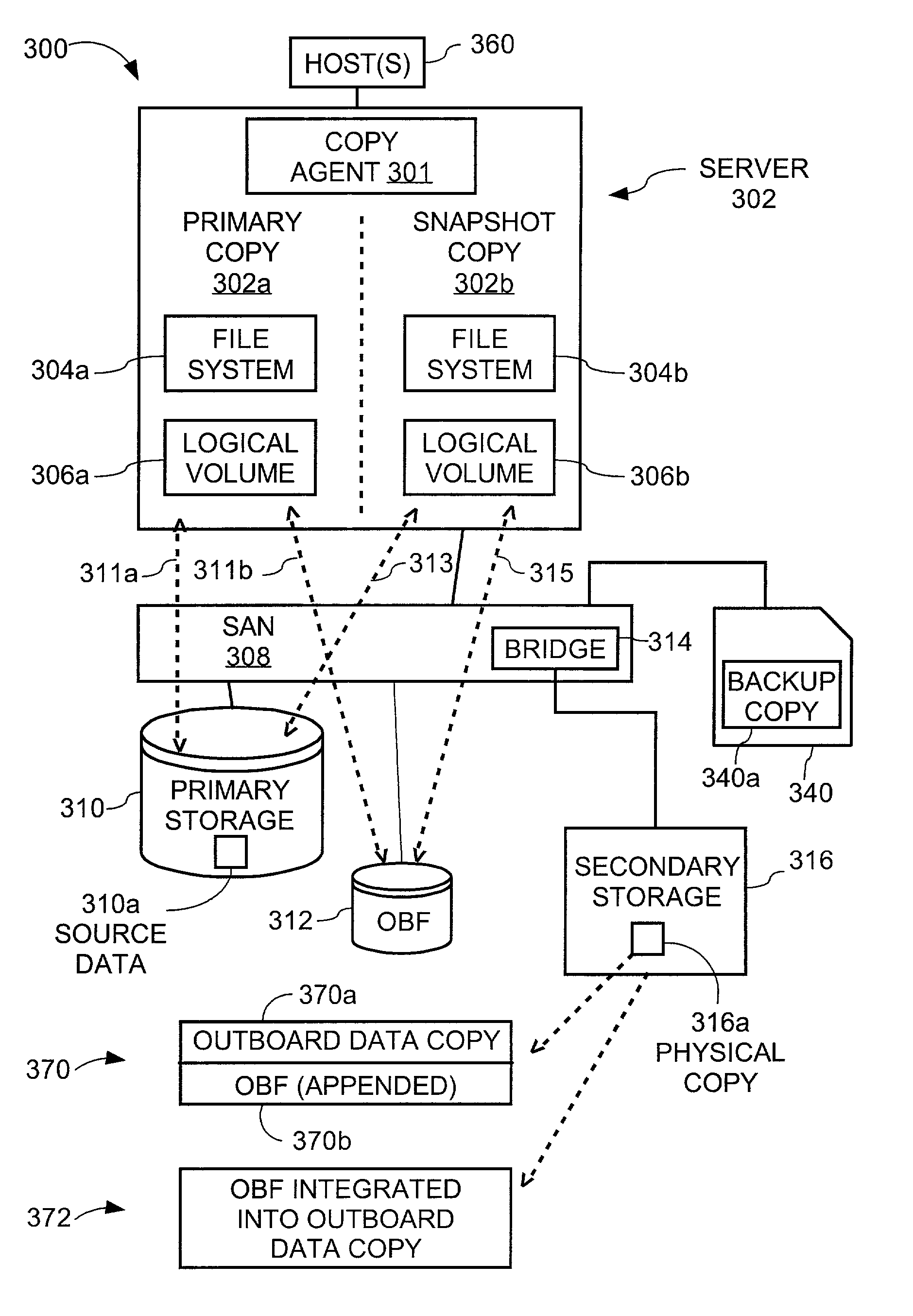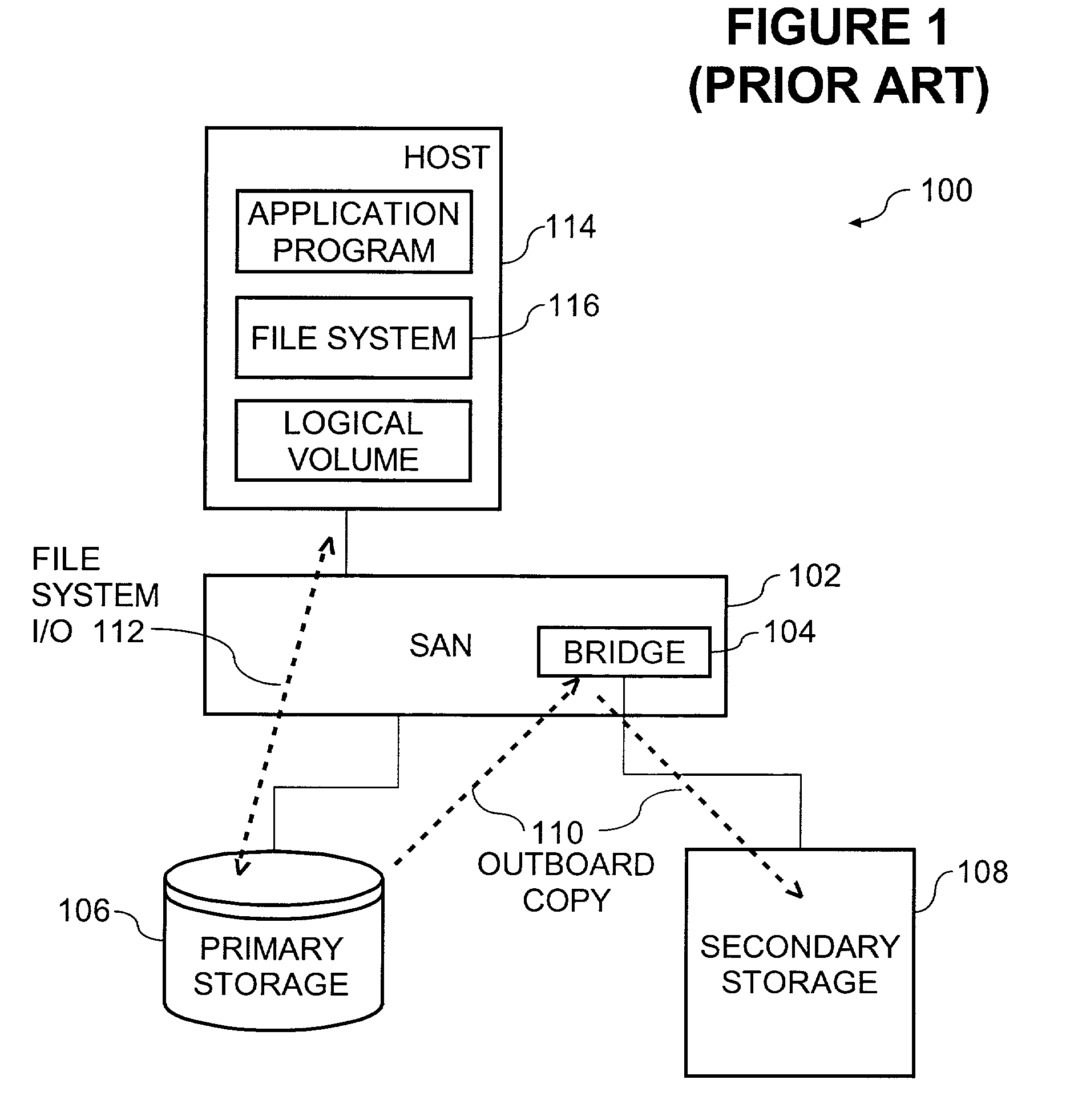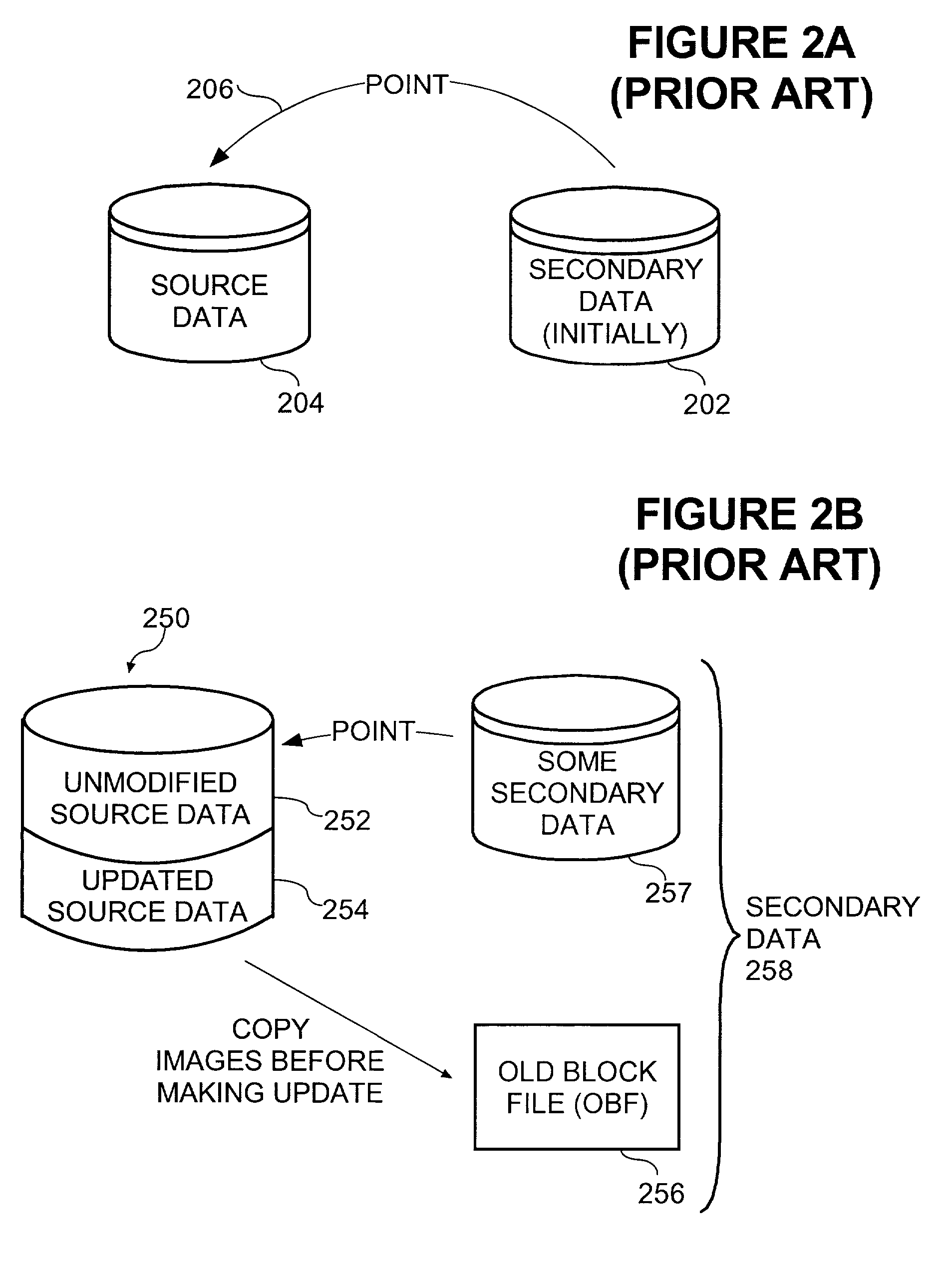Copy method supplementing outboard data copy with previously instituted copy-on-write logical snapshot to create duplicate consistent with source data as of designated time
a technology of copying and logical snapshots, applied in the field of copying digital data, can solve the problems of imposing overhead on the application, occupying a significant amount of storage space, and the logical snapshot techniques are not completely perfect, so as to minimize the amount of additional disk space
- Summary
- Abstract
- Description
- Claims
- Application Information
AI Technical Summary
Benefits of technology
Problems solved by technology
Method used
Image
Examples
first embodiment
RESTORE SEQUENCE—FIRST EMBODIMENT
[0047]FIG. 7A shows a restore sequence 700, which broadly serves to utilize the physical copy 316a to restore the source data 310a, for example in case of destruction, contamination, failure, or other loss of the source data 310a. As an alternative, using similar principles, the sequence 700 may utilize the backup copy 340a to restore the source data 310a. For ease of explanation, but without any intended limitation, the example of FIG. 7A is described in the context of the system 300 described above in FIG. 3. Furthermore, the sequence 700 is described in the context of the particular embodiment of sequence 600 where step 608 appends OBF blocks 370b to the outboard data copy 370a.
[0048]The sequence 700 starts in step 701, in which the agent 301 receives a restore request. This request may be received from a hierarchically superior application or host, from an operator such as a system administrator, from a process internal to the server 302, or ano...
second embodiment
RESTORE SEQUENCE—SECOND EMBODIMENT
[0050]FIG. 7B shows a different restore sequence 750, namely, a sequence based upon the embodiment of operation 608 that overwrites OBF blocks upon their counterpart data blocks in the outboard data copy (as shown by 372, FIG. 3). In other words, the restoration sequence 750 starts with a physical copy 316a comprising a mirror image of the source data 310a as of the moment the logical snapshot was created (namely, step 602). Namely, the physical copy comprises the integrated data 372. The sequence 750 is also appropriate where, as discussed above, subsequent reclamation, reorganization, or other operations been performed in such a way to integrate the OBF 370a and outboard data copy 370b portions of the physical copy 370. Alternatively, the sequence 750 may utilize the backup copy 340a rather than the integrated physical copy 372.
[0051]The sequence 750 is initiated in step 752, in which the agent 301 receives a restore request, similar to step 701 d...
PUM
 Login to View More
Login to View More Abstract
Description
Claims
Application Information
 Login to View More
Login to View More - R&D
- Intellectual Property
- Life Sciences
- Materials
- Tech Scout
- Unparalleled Data Quality
- Higher Quality Content
- 60% Fewer Hallucinations
Browse by: Latest US Patents, China's latest patents, Technical Efficacy Thesaurus, Application Domain, Technology Topic, Popular Technical Reports.
© 2025 PatSnap. All rights reserved.Legal|Privacy policy|Modern Slavery Act Transparency Statement|Sitemap|About US| Contact US: help@patsnap.com



